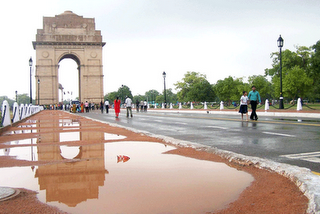 To travel to the world’s most beautiful places is one of the best rewards you could ever give yourself. Backpacking, as how it is usually termed, is probably one of the most ideal ways to regain the vigor towards work and daily living. So to make the most out of a vacation trip, it is not enough to just avail the cheapest air fare. There are lots of things to do to make backpacking truly memorable.
To travel to the world’s most beautiful places is one of the best rewards you could ever give yourself. Backpacking, as how it is usually termed, is probably one of the most ideal ways to regain the vigor towards work and daily living. So to make the most out of a vacation trip, it is not enough to just avail the cheapest air fare. There are lots of things to do to make backpacking truly memorable.First and foremost, it is really advisable to settle for airline companies offering discount airfare. After all, there is a huge chance that you will be a spending a fortune on your destination; so it is rather good to avail the cheapest offers.
Once you have already settled for the cheapest air fare deals, it would be best to also avail of the cheapest hotel rate there is. But comfort should not be compromised. So it would be probably best to check on online air ticket booking sites which are tied up with air ticket booking companies for package deals.
After the bookings, the trip preparation begins. Other than the finances, you have to mentally get ready for the excitement of your trip. Spend a few days researching about the best locations in the country you are visiting. This way, you will have your itinerary beforehand and you would no longer waste your precious time deciding where to go, on the spot.
It is also recommended that you do check on some reviews detailing the culture of the locals you will probably be mingling with. After all, you will be a foreigner to their country and it is given that you will be the one to adapt to their ways of living. Learning their language is also a plus point. You do not have to worry, anyway, because people are naturally friendly, and understanding the way they are will surely do you good as how a discount airfare did.
Lastly, to make your getaway truly memorable, it is best to bring a friend to share the happiness with you. After all, the cheapest air fare is available. Anybody would not say no to that.




























